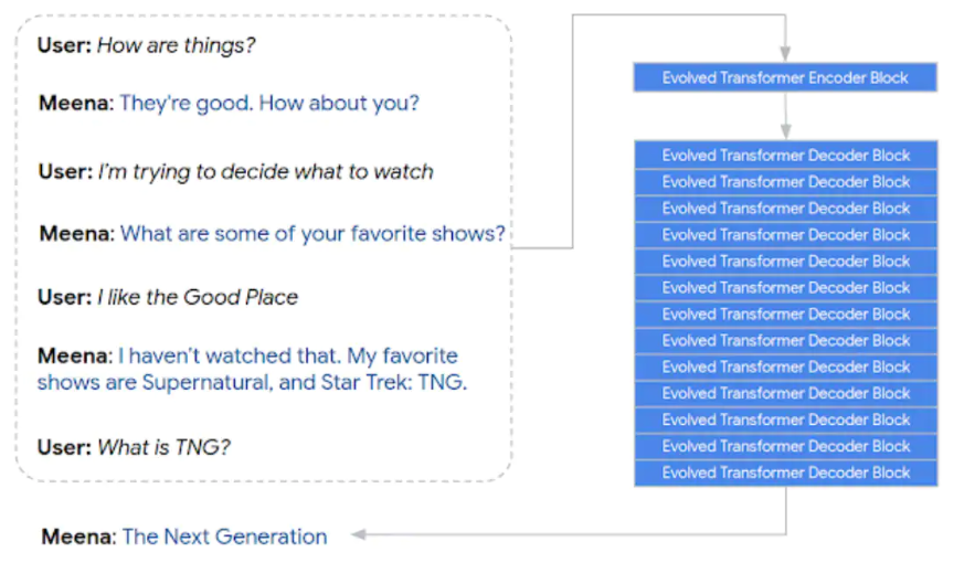

It is very hard for chatbots to create responses that exceed simple attributions or generic answers. Those two examples show that though the responses are somehow correct, they are just a statement about plain attributes of an object, that either reflect a definition that a single developer would give or are the main attributes assigned to an object through a database. Her response to the computer question was that it looked like a “laptop with USB mouse”. Zo however is a culturally diverse being, which is mostly due to the huge amount of data she had access to and the diversity of people who trained the AI. Mitsuku seems human, because she is partly human: she was mostly constructed by one single person for over 13 years, reflecting the developer’s cultural preferences as well as taking into consideration a broad target group due to the long time span it is online now.
#Try meena chatbot tv
To give an example: when I asked her to describe a computer, she replies “A computer looks like a TV crossed with a typewriter”– a response, which hardly any 18-year-old would give and which is thus not fully authentic. While she states being an 18-year-old female chatbot from Leeds, her habitus rather refers to what might be her developer's. What became clear after talking to Mitsuku for a while, is that her habitus does not match the impression she tries to give to her audience.

Two very good English-speaking chatbots I talked to were Microsoft’s Zo and Steve Worswick’s Mitsuku. Put simply, I looked at the chatbots‘ fact-based knowledge, their characters built up by interacting with the users in comparison to what they stated about themselves, their comprehension of context and allusions, their understanding of “world systems“ connected to expressions and terms, and whether they could communicate in a meaningful way. Analyzing interviews conducted with virtual companions, I considered different understandings of culture, including concepts of Bourdieu, Goffman, Luhmann, Peirce, Kockelman and Fillmore. Culture can be understood from various perspectives: there are actor-centered, system-oriented or interpretative approaches to culture. Schegloff described in sequence organization, Google just stepped up their game by bringing up metrics such as sensibleness and specificity based on human judgement. While their former technology Google Duplex simply made use of the machinery that e.g.

In my research, I looked at different cultural aspects implemented in existing conversational agents – and it seems like Google is one of the first to address at least some aspects of culture in chatbots. The question, whether culture can be appropriately implemented into chatbots, remained - until Google recently launched Meena.

However, when digging deeper into topics that required cultural skills in general, chatbots mostly failed in conversations: they do not fully understand the input, or their responses are just plain generic answers. Having conducted interviews with chatbots (more precisely “virtual companions” or “conversational agents”, as some might call them) as part of my latest research, I could actually find some of these cultural aspects implemented in Microsoft’s chatbot Zo, but also in Steve Worswick’s award-winning chatbot Mitsuku. Recently I talked to Microsoft about their values, among them transparency, fairness and inclusiveness.


 0 kommentar(er)
0 kommentar(er)
